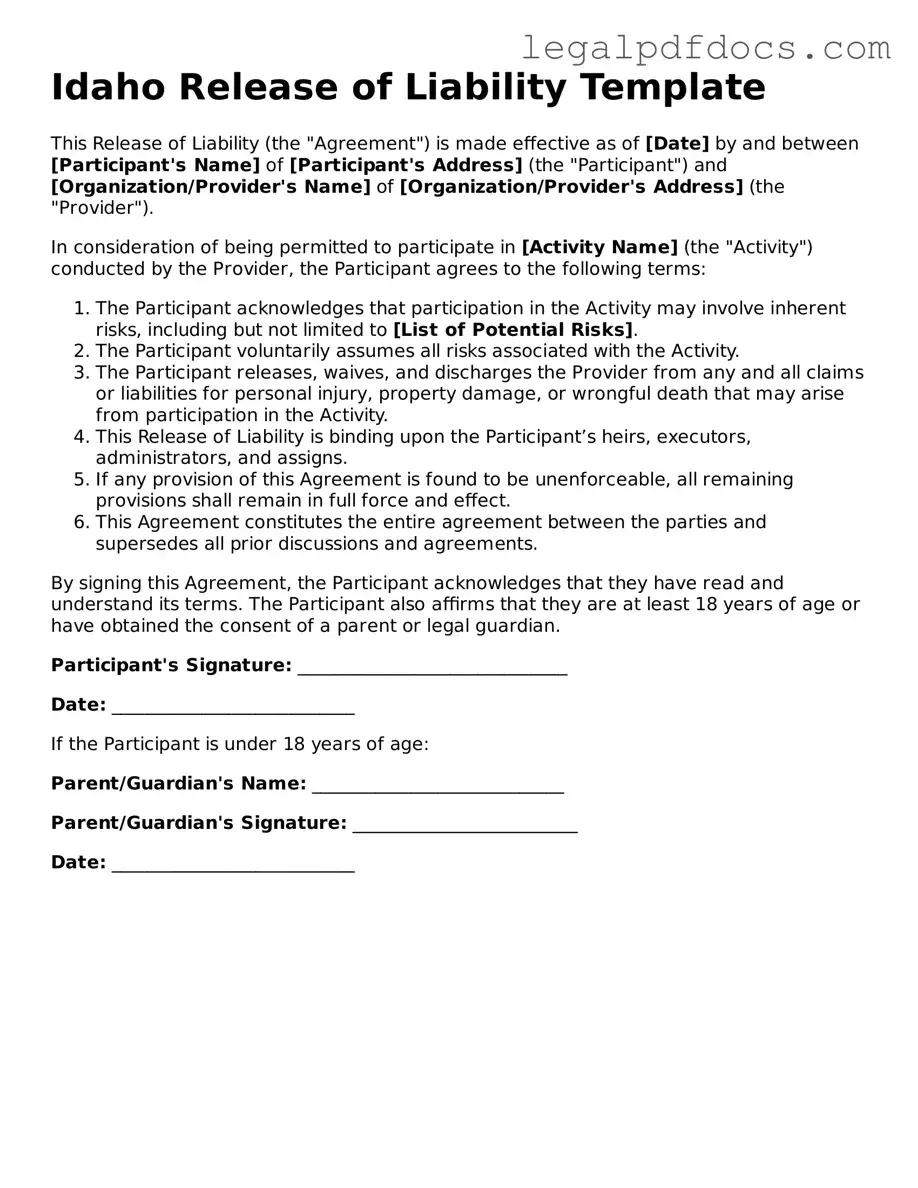In the scenic landscapes of Idaho, outdoor adventures abound, from hiking in the majestic mountains to rafting on the thrilling rivers. However, with these exhilarating experiences comes a need for caution and responsibility. One essential tool for both individuals and organizations involved in recreational activities is the Idaho Release of Liability form. This document serves as a protective measure, allowing participants to acknowledge the inherent risks associated with various activities, such as sports, camping, or other outdoor excursions. By signing this form, individuals agree to waive their right to hold the organizers or providers accountable for any injuries or damages that may occur during the activity. It is crucial to understand that this form not only clarifies the responsibilities of each party but also fosters a sense of awareness about the potential dangers involved. Whether you are a participant eager to explore the great outdoors or an organizer striving to ensure a safe environment, grasping the significance of the Release of Liability form can enhance your experience while minimizing legal risks. In this article, we will delve into the key components of the form, its importance, and how it can be effectively utilized to safeguard both participants and organizers alike.
